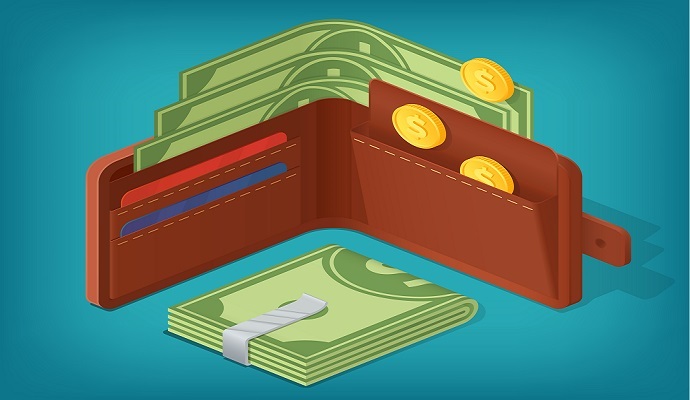Individual Market COVID-19 Treatments May Cost Less Than Expected
Actual COVID-19 treatment costs for the health insurance market could be as much as $3.37 billion less than anticipated.

Source: Getty Images
- The individual health insurance market will experience the economic impact of coronavirus in three major ways, including potentially lower COVID-19 treatment costs, a Robert Wood Johnson Foundation (RWJF) report recently found.
The coronavirus could economically impact the individual health insurance market through increased healthcare spending, shifts in healthcare service utilization, and a recession.
For more coronavirus updates, visit our resource page, updated twice daily by Xtelligent Healthcare Media.
“With its dramatic impacts on both population health and the economy, COVID-19 is disrupting every segment of health insurance,” the report explained. “The individual insurance market, recently more stable after a precarious beginning, will undoubtedly feel the impact of large changes.”
Healthcare spending shifts in a couple of areas could have conflicting impacts on the individual health insurance market.
READ MORE: COVID-19 Healthcare Spending Forces Difficult Choices for Payers
Testing costs could be escalating.
The federal government has passed legislation intended to protect patients from healthcare costs. The legislation relieves patients on group health insurance market plans and individual health insurance market plans from having to pay for healthcare visits related to coronavirus testing, the tests themselves, and other testing-related products and services.
However, for hospital systems that have created their own tests, patients are still at risk of out-of-network bills, the report warned.
Furthermore, as more patients need to undergo coronavirus testing, healthcare spending on coronavirus testing will naturally scale upward. Some patients may even be tested multiple times, which means estimates, such as Covered California’s, counting the number of patients who will be tested may be vastly underestimating the actual costs, the RWJF report warned.
However, as coronavirus testing costs escalate, coronavirus treatment costs may be lower than projected.
READ MORE: 3 Economic Uncertainties That Payers Face Amid Coronavirus Crisis
This is in part due to the surge of coronavirus testing. Higher levels of testing are intended to prevent the spread of the disease, which, if successful, would lower disease incidence and naturally lead to lower treatment costs.
Beyond the declining incidence of coronavirus, the initial projections of treatment costs could be overblown, the RWJF report suggested.
In March toward the beginning of the US outbreak of coronavirus, experts estimated a wide variation in coronavirus treatment costs. Those with no comorbidities or complications would see overall treatment costs of on average $9,763. Those with less serious complications would see around $13,767 in treatment costs, and for those with comorbidities or complications the costs on average would total $20,292.
For the individual health insurance market, these estimates were particularly ominous because the individual market has a higher rate of chronic conditions which could lead to more complicated—and more expensive—coronavirus treatments. Individual health insurance markets also serve a more urban demographic, which is the environment in which this virus thrives, and more narrow provider networks, which may expose payers to out-of-network costs.
Thus, it is understandable that estimates for individual health insurance market costs have been high. RWJF estimated individual health insurance market plans would pay out around $4 billion dollars for coronavirus treatment in 2020. This assumes 215,000 hospitalizations of individual health insurance market members with 47,000 members requiring intensive care, based on America's Health Insurance Plans and Covered California data.
READ MORE: Payer Claims, Economics, Operations Will Suffer Due to COVID-19
But the most recent Institute for Health Metrics and Evaluation projections of the US death rate has scaled down dramatically, which has implications for treatment costs as well. According to the RWJF’s calculations, this decrease could bring the number of individual health insurance market hospitalizations to around 34,000, costing a total of around $623 million, a full $3.37 billion less than the original projection.
Coronavirus is also changing healthcare utilizations. Non-urgent conditions and elective care has been postponed, which is expected to offset some of the coronavirus-related costs. This is one of the major economic factors hitting most health insurance markets, not the least of which being the individual health insurance market.
And lastly, the recession could strike the individual health insurance market in unpredictable ways as this is the first recession the market will have to endure. Doubtless, it will be characterized by a lot of market churn. RWJF predicted that there would be an influx of previously group health insurance market members as well as an outflow to Medicaid.
The report also anticipated that nonpayment could increase as a result of the recession, but the recession could also put a damper on healthcare utilization as people may avoid healthcare costs in difficult economic times.
With all of the uncertainties in mind, though, RWJF concluded that the short-term impacts could be positive for the individual health insurance market, with the reduction in healthcare utilization costs cushion the industry for the impact of claims costs which will follow.
“Recession will likely change the size and composition of enrollment and could continue to depress health care spending into next year, as members with high deductibles conserve their resources,” RWJF explained.
These factors will have significant implications for individual health insurance market payers as they determine premiums for 2021.
